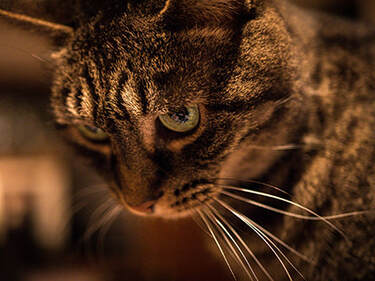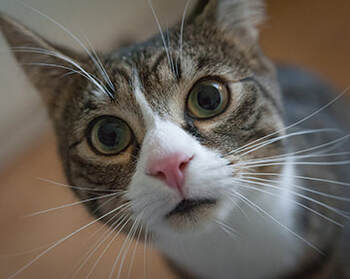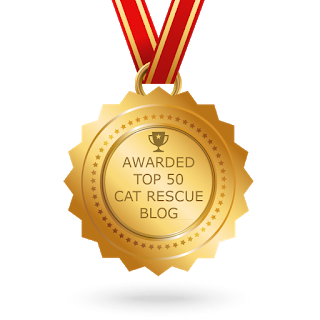
Head pressing is the compulsive act of a cat repeatedly and relentlessly pressing her head against a wall or any other hard surface for no apparent reason. Different from head butting -- when a cat rubs or bumps her head, particularly against a person, as a sign of affection -- head pressing is usually a sign of damage to her nervous system.
Should you notice your kitty engaging in head pressing, it’s essential to pay a prompt visit to your vet. Provide your vet with a comprehensive history of your cat’s overall health, noting when the head pressing began and what incidents may have preceded it. Describe any symptoms that accompany her head pressing, including abnormal vocalization, compulsive pacing and circling, changes in learned behavior, seizures, damaged reflexes, disorientation and visual impairment. Some of these symptoms may have already manifested themselves physically – from sores on her feet due to compulsive pacing to injuries on her face or head caused by pressing her head against a hard surface for an extended period of time.
After first examining her thoroughly, your vet will then focus on uncovering the underlying cause of her behavior by performing a fundic examination of each retina (the layer of the eye that receives and processes images) and the other structures at the back of each eye. This may reveal irregularities in her brain, some infectious disease or an inflammatory disease. Your vet will also have blood work and a urinalysis done, which could reveal a problem with her metabolic system or indicate the presence of toxins in her system. Other tests may include taking her blood pressure to determine if she has high blood pressure and ordering a CT scan and/or MRI scan of her brain.
Armed with the results of these various tests, your vet should be able to pinpoint the reason behind your cat’s head pressing. Some of the most common are a brain tumor, prosencephalon disease (damage to the forebrain and thalamus), encephalitis (inflammation of the brain), liver shunts, disorders of the metabolism, toxic poisoning, an infection (rabies and viruses, fungal and parasitic infections) and acute head trauma, possibly resulting from a car accident.
The treatment prescribed will depend on the condition causing the head pressing in the first place. Example: serious issues such as brain tumors or encephalitis may require surgery and hospitalization. Example: if your cat has a metabolic disorder, she may be treated with medications on an outpatient basis.
But whatever the treatment, your vet will recommend follow-up neurological examinations to monitor the progress of the condition. If, however, no diagnosis can be made, your cat may continue her head pressing. Be certain, though, to alert your vet as to any new behaviors or symptoms that may appear.
While head pressing is serious, the potential for a full recovery, depending on the underlying cause, is possible for many cats. But sadly, for others, the condition can be fatal.










 RSS Feed
RSS Feed